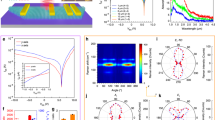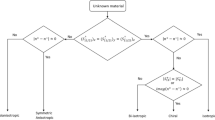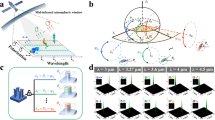Abstract
A METHOD of making thin selenium films with free surfaces has been devised, and this has enabled us to construct a pile of selenium films which polarize a beam of radiation falling on the plates at the appropriate angle. The transmitted beam is the one which is used, and a high degree of polarization (with very little loss of efficiency) is obtained with only three films. The films are not perfectly flat ; since, however, they are only a few microns thick, this introduces no distortion in the transmitted beam, and is of service in eliminating the loss of polarization due to multiple reflexions. The films show a small absorption at a wave-length of 2 µ, but are otherwise transparent so far as we have examined them (about 7 µ).
This is a preview of subscription content, access via your institution
Access options
Subscribe to this journal
Receive 51 print issues and online access
$199.00 per year
only $3.90 per issue
Buy this article
- Purchase on Springer Link
- Instant access to full article PDF
Prices may be subject to local taxes which are calculated during checkout
Similar content being viewed by others
References
Ellis, J. W., and Bath, Jean, J. Chem. Phys., 6, 221 (1938).
Author information
Authors and Affiliations
Rights and permissions
About this article
Cite this article
ELLIOTT, A., AMBROSE, E. Polarization of Infra-Red Radiation. Nature 159, 641–642 (1947). https://doi.org/10.1038/159641a0
Issue Date:
DOI: https://doi.org/10.1038/159641a0
This article is cited by
-
Absorption Spectra with Polarized Infra-Red Radiation
Nature (1947)
-
Use of Polarized Radiation in Infra-Red Analysis
Nature (1947)
Comments
By submitting a comment you agree to abide by our Terms and Community Guidelines. If you find something abusive or that does not comply with our terms or guidelines please flag it as inappropriate.



